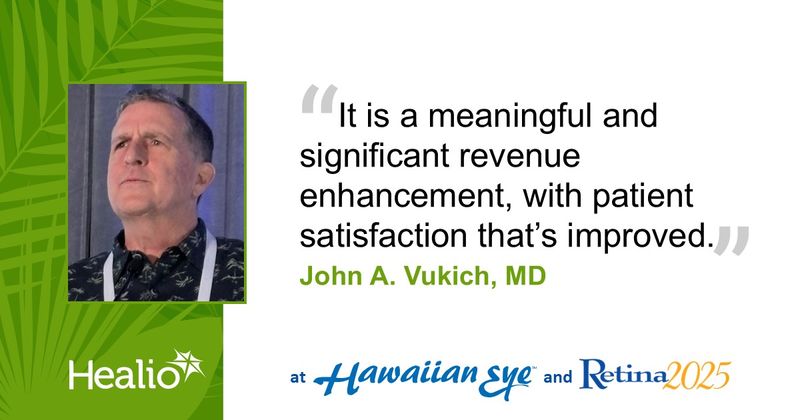FLACS satisfies patients, enhances revenue
Key takeaways:
- Femtosecond laser-assisted cataract surgery offers premium refractive outcomes for patients with astigmatism.
- It is time- and cost-efficient.
KOLOA, Hawaii — Femtosecond laser-assisted cataract surgery is a viable surgical option that offers patients and ophthalmologists a variety of benefits, according to a speaker at Hawaiian Eye 2025.
John A. Vukich, MD, who was on the original development team, said he was initially concerned about time efficiency, cost, return on investment and patient satisfaction with femtosecond laser-assisted cataract surgery (FLACS).

“I didn’t think it solved a problem that I had,” he said.
But maybe it was solving a problem, Vukich added, because he was not correcting astigmatism that was 1.25 D or less.
“Would you prescribe a refractive correction for glasses and not add in .75 D of astigmatism — or ignore 1 D?” he asked. “Of course you wouldn’t. It’s a meaningful improvement in quality of vision.”
Every patient has a refractive expectation, Vukich said, and you should optimize vision for their desired level of correction.
“Toric IOL alignment was a tipping point for me,” he said.
FLACS has yielded positive levels of patient satisfaction through astigmatism correction, as well as improved accuracy for the ophthalmologist when performing arcuate incisions.
“Satisfaction is what it's all about,” he said. “[Patients] are an advocate for you and your practice, and they're an advocate for the fact that they see very well.”
In addition, a time evaluation Vukich performed found that the average time for surgery was 2 minutes and 15 seconds for FLACS, demonstrating “zero negative effect on surgical efficiency.”
A common concern about the procedure is its cost, for patients and the practice.
The average retail price of a pair of new glasses is $500 to $700, he said.
“The reality is that patients are very accepting of the idea that the cost of two or even three pairs of glasses to not need distance correction is something that makes sense to them,” he said.
In addition, within 9 months of incorporating it into his practice, 34% of Vukich’s patients who are eligible have chosen to undergo FLACS for astigmatic correction, and it has had a positive impact on practice revenue.
“The net contribution in our practice after we have paid for everything is 3.1x what we collect for single vision cataract surgery,” he said.
“It is a meaningful and significant revenue enhancement, with patient satisfaction that’s improved,” he concluded. “I am now a believer.”

